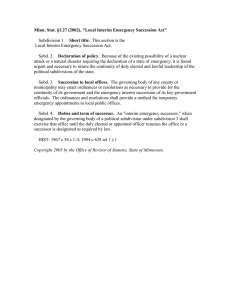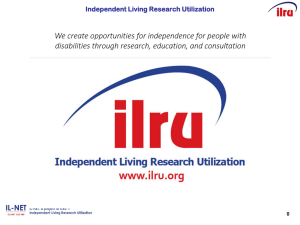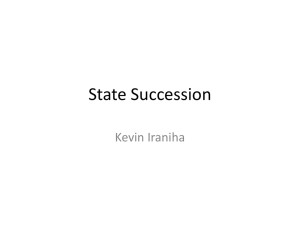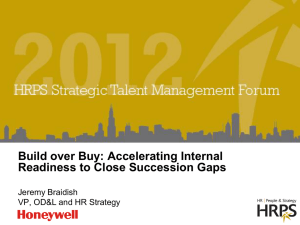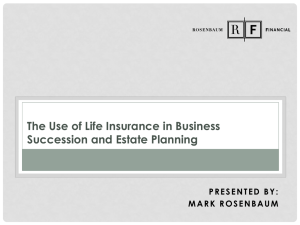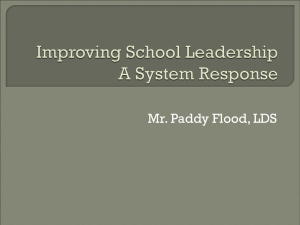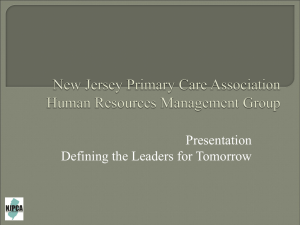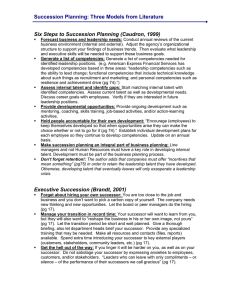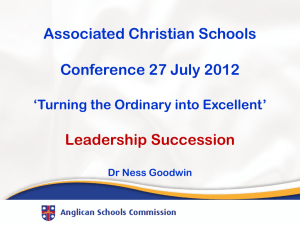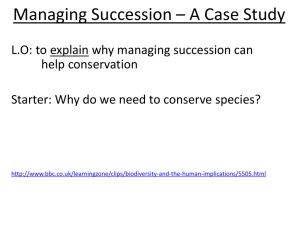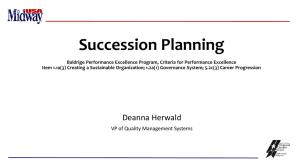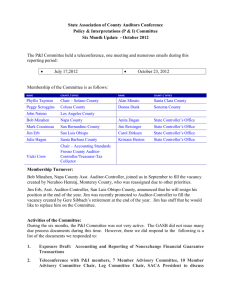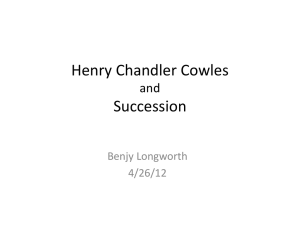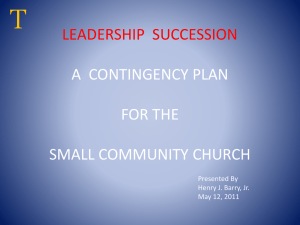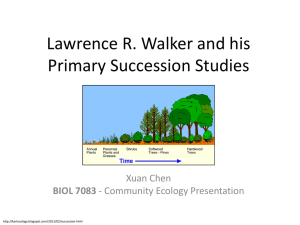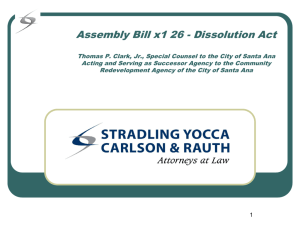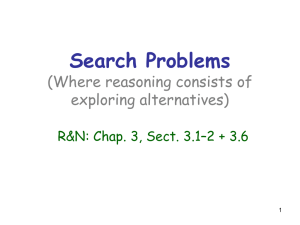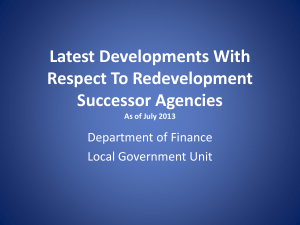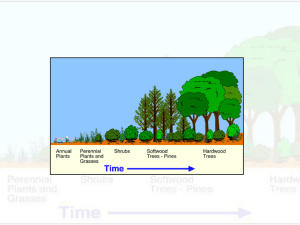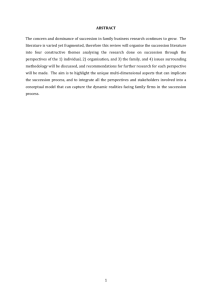Executive Succession
advertisement
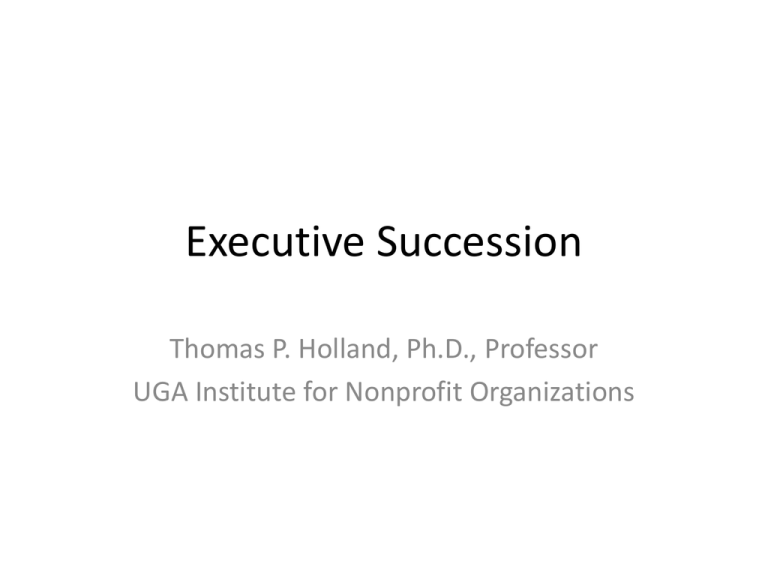
Executive Succession Thomas P. Holland, Ph.D., Professor UGA Institute for Nonprofit Organizations What is it? • Intentionally replacing a good executive with another. • Should be done in ways that minimize disruptions for whole organization. • The board is responsible for planning and implementing the transition. • Preparing for executive transition is part of long-run planning for the organization. • Especially important where current executive is approaching retirement age. • Transition plans also useful in emergencies. Avoidance • We don’t want our executive to think we are not satisfied with the work she/he is doing. • I don’t want my board to think I’m unhappy and thinking about leaving. • Fantasies of indispensability (Founder’s Syndrome also influences an executive who has been in job many years) • Often neither party knows what to do about executive transition, and in the press of work we just neglect addressing the issue. • Can lead to awkward transition for the organization, conflict in board or organization, and unhappy executives (the one coming in as well as the one departing). Why and how to plan for this • Transitions are inevitable and present opportunities for transformative change if handled well. • The board is responsible for ensuring the smooth operation of the organization. • An important part of that is developing an executive transition plan in advance of needing to use it. Be prepared. • Boards often delegate the work of developing such plans to the executive, who takes into consideration the concerns of the board and needs of the organization. • Draft plan submitted to board for refinement and approval well before it is needed. • Plan should be a part of an overall HR plan for promoting and replacing each staff member in the organization: every position should have 2 or more people who know how and are prepared to handle it. • Serves to replace dependence on individuals, and bases operations on ongoing systems. Development for every staff member • Every executive should put into place a transition plan for every position and groom people to move into the roles whenever needed. • Clarify the vision and core values of the organization, its strategic goals for future, skills needed to accomplish them. • Incorporate components into a plan for each position, including the executive, well in advance of needing it. Basic HR practices • Career development and building leadership and management skills should be done with every employee. • Start with the organization’s goals and identify skills needed to accomplish each • Talent pools and gaps should be identified based on goals, competencies, skills, behaviors. • Use periodic assessments to identify, train, and reinforce increasing contributions to organization. • Provide opportunities for people to learn and practice other jobs • Promote mobility to retain high performers. • Compensation: use current information about salaries and benefits for similar positions. • Apply same principles to executive position. Some Important Executive Skills to Cultivate among Staff • • • • • • • • • • • • • • • • Analytical and problem-solving Oral and written communication Contracting Consumer and donor relations Decisiveness Flexibility Negotiating, finding shared solutions Integrity, honesty Leadership Organizational awareness Planning and evaluating Policy analysis and development Tolerance of stress and differences Vision Technical skills, computers, information systems Financial proficiencies Prerequisites for Executive Succession • Board should create conditions that will enable executive to be successful in role. • Establish procedures for board to evaluate executive performance annually, executive to evaluate board, and board to evaluate itself. • Issues to be addressed in assessments – – – – – – – Mission, values, vision Strategic thinking Finances, fundraising Governance Management skills and practices Communications Organizational culture • Discuss findings to formulate goals for coming year. • Clearly specify mutual expectations. Evaluating board readiness for transition • Does the job description for the executive clearly spell out goals, expectations, duties? • Is there a climate of mutual respect between board and executive? • Do board members understand their roles and responsibilities? • Does board have regular process for evaluating executive’s performance and benefits? • Does board have regular process for evaluating its own responsibilities and performance? • Is there a shared vision of how the organization should evolve in coming 3-5 years? • Does the work of the board and the executive build on this vision? • Does board have clear understanding of organization’s finances? Reflections for the Executive • Do I still want to lead this organization? • Am I right for the organization’s coming needs, challenges? Is it right for me? • Am I ready to take on these important life questions? • What new interests and opportunities will I pursue? • Am I financially ready to deal with the transition (either to another position or into retirement)? • Do I have support systems in place to go through with what is an emotionally and intellectually challenging process? • Timing: when should I start the process and with whom? • What unfinished business should I take care of before going to the board with this matter? To my staff? Clarifying expectations for new Executive • Start with organization’s goals, vision, core values (not with trying to replicate the executive or trying to identify someone who is nothing like the executive) • Organization’s needs change, so consider what it will need for the future (not just what has worked in the past). • Specify characteristics & skills needed to lead organization into its future and accomplish its strategic goals. • Update executive’s job description. • Incorporate needed skills and capacities into plans for successor • Sometimes executives have become “super-people” doing work that no normal human being could replace, so be realistic in expectations. Practical Steps • Executive talks with board about decision to leave, how to handle transition successfully. • Decide if there is an internal candidate. If so, plan with board how to groom & prepare person. • Communicate transition status to stakeholders. • Conduct organizational assessment • Translate findings into requirements for new executive. • Conduct search, putting internal candidate through all steps required of external ones. • If choice of outsider, tell internal person first and discuss how best to handle going public. • Set up orientation for new appointee. Smooth the way for successor • Develop specific inventory of executive tasks, resources, contacts, recurring and intermittent events, key relationships, written and unwritten agreements. • Make annual calendar, noting key people in process and organization’s traditions • Specify location of key materials, resource s(such as keys, personnel files, checkbook, telephone number, combination to safe, alarm codes, maintenance people, birthdays) • If successor is an insider, give them major tasks and responsibilities before process begins • Make sure person understands organization’s finances • Introduce them to people important to the organization • Help them think through their goals and priorities More things to help your successor • Things to do – Make sure strategic plan is current – Encourage attendance at learning opportunities, conferences, professional associations – Create opportunities for interactions with board – Move major responsibilities and tasks to the person – Provide mentoring, coaching – Be available when asked – Just go away for a while (if you are staying in the organization) • Things not to do – Leave important unfinished business – Engage in second-guessing, giving unwanted advice or criticism (inside or outside) Further Resources www.managementhelp.org Click on succession planning and on chief executive Search Internet using “executive succession” for numerous other resources on this topic, such as www.transitionguides.com www.boardsource.org also has a fine booklet, Chief Executive Succession Planning

